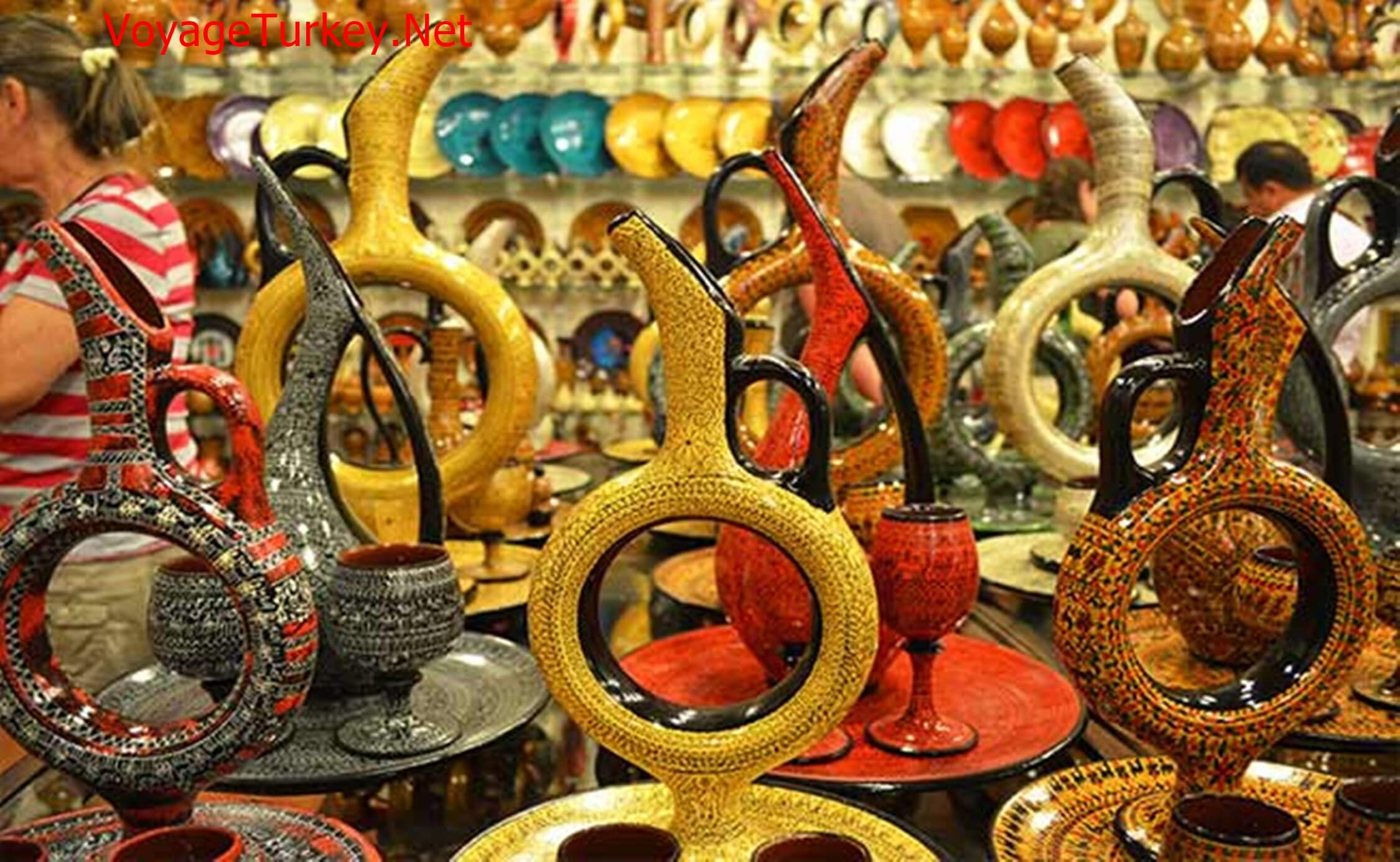One of the most beautiful tourist attractions in Cappadocia is to experience pottery making.
The Avanos District of Nevşehir Province in the Cappadocia region is famous for its pottery. The most famous terracotta ceramics producer in Cappadocia is Avanos.
The pottery of Avanos, which has been known in ancient times with names like Zuwinasa, Nenansa, and Venessa, reflects thousands of years of history. Pottery production in Avanos has been continuous since the Hittites. Pottery making is known to be an ancient art since Hittite times (1800 BC) in this area and is continued in the ancient traditional ways.
The main reason why pottery is so widespread is the red soil in the region. The red clay in the Kızılırmak River delta is very suitable for pottery making. As the Kızılırmak erodes the red tuff layer formed by the eruption of volcanic volcanoes, a red mud and a mixture of red tuff and shaft emerges. This oily and soft clay soil collected from the foothills of the Avanos Mountains and the Kızılırmak deposits turns into a masterpiece in the hands of the masters.
How is Pottery Made in Avanos?
First of all, the greasy and soft clay collected from the foothills of the Avanos Mountains and the Kızılırmak River Delta is sieved with a sieve. Then it is mixed with water and made into dough.
This dough is rested for one week and is shaped by wheel or mold. However, the common and traditional method is the wheel (lathe).
As can be seen from the picture below, the potter places the dough on the wheel. Then, it hits the underside of the wheel with his/her feet, allowing the wheel to spin quickly. During this rotation, the potter prepares the product by shaping the dough.
Then, the shaped pot is painted and decorated before it dries. In local art, this is called armor (zırhlama. The surface of the armored pot is polished with a tool before it is completely dry. This process is called calendering (perdahlama).
The armored and polished pot is dried by waiting in the sun for a suitable period. The dried pots are cooked in the ovens for 1-3 days and kept in the oven until it cools down. After the pots have cooled, they are glazed to obtain a glassy appearance on the surface of the pots.
What can be done about pottery in Cappadocia and Avanos?
First of all, it is recommended to buy pottery works as a souvenir of Cappadocia. These products, produced with traditional methods and adorned with local motifs, will always remind you of Cappadocia. The price of the product varies according to its size and labor that spend for product.
The most famous of these products is the jug called “Hittite Sun Jug”. The word Hittite in the name of the product is meant to emphasize that this pot is from the Hittites. The Hittites made this jug to represent the sun, their first god, and left the middle of the jug empty to represent the sun. According to the legend, after filling the jug wine or water, the Hittites put the jugs on the highest place of the region before sunrise and put them in the direction of the sun. They believed that when the light of the rising sun passed through this jug, the sun blessed this wine or water.
You can also experience the pottery making in Avanos pottery workshops called chez. It is recommended that you try making pottery on the wheels under the supervision of the pottery masters in these workshops.
